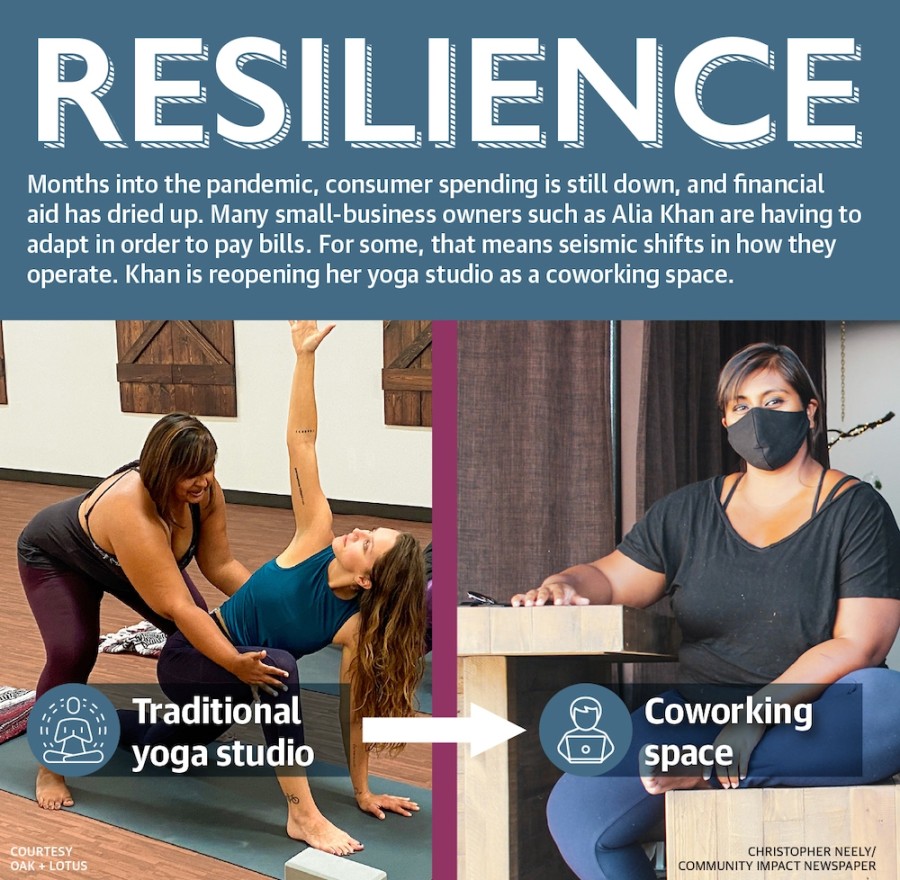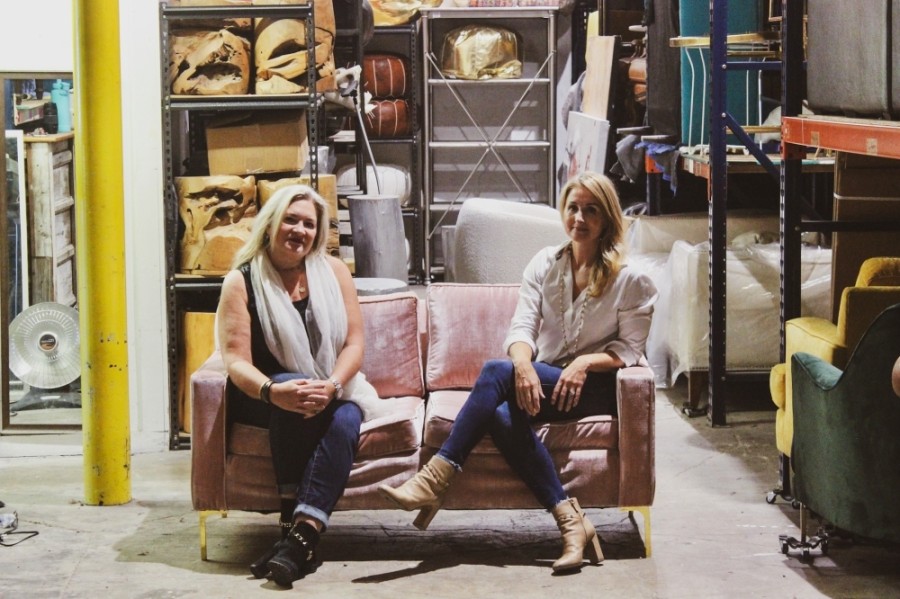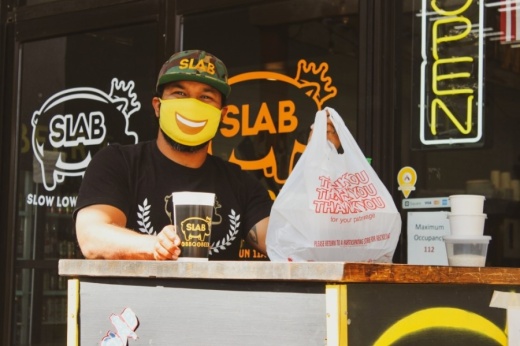Her landlord has been flexible, but Khan knows it cannot last. She tried subletting her space and created a digital library of yoga classes along with livestreamed sessions. She has had fleeting successes, but none have solved her long-term challenge of paying rent on a 2,000-square-foot studio space that has sat mostly vacant for more than seven months.
The entrepreneur in Khan has refused to give in, and she has drawn up one final Hail Mary. With her one-year anniversary around the corner, Khan has reopened Oak + Lotus as a coworking studio. She acknowledged the drastic change but said she is out of options and sees it as the best chance to pay for her space.
“I’m doing what I can because I really don’t want to lose this space. I’ve put so much into creating it, and I see the post-coronavirus potential in it,” Khan said. “The bottom line is, I need to pay the rent. I’m trying to get as creative as possible. How I get paid doesn’t matter. I just need to pay the rent.”
Over more than seven months, this once-in-a-hundred-years public health crisis has ravaged Austin’s famed small-business community, and countless local institutions have shuttered, from Threadgill’s and I Luv Video to Dart Bowl and Magnolia Café. The previously humming local economy has taken a downturn; unemployment reached as high as 12.4%; the city’s live music ecosystem sits on the brink of collapse; and officials say they are not ready for the “tsunami” of hurt once eviction moratoriums expire.
Community Impact Newspaper spoke with 13 small and local business owners and managers across a variety of industries who have, so far, held on. Whether it was a relatively simple switch to virtual or takeout, or a seismic shift in the services they offer, none of the businesses look as they did at the start of March.
Local and federal officials say the coronavirus will likely remain the central community concern well into 2021. The business owners said their minds are shifting from the hectic day-to-day, minute-to-minute reassessments to figuring out how they are going to survive with the pandemic for the foreseeable future.
With consumers spending less, federal stimulus money dried up and local dollars limited, they say their choice is simple, even if the work is not: adapt or lose their livelihood.
Awakening survival instincts 
When the city issued its shelter-in-place order March 25, Raf Robinson, owner of Slab BBQ, called it a low point. He laid off much of his staff and said he had difficulty dealing with the uncertainty caused by the public health crisis.Robinson said the Payroll Protection Program loan saved his restaurant. As a Black-owned business, Slab BBQ then received a boost in traffic during the Black Lives Matter marches over the summer. Robinson admitted that, just weeks before, he was “literally having a panic attack” over his restaurant’s future.
Robinson then began adapting. He invested in expanded outdoor seating, partitioned indoor dining tables with plexiglass and put a focus on takeout, which has helped stabilize his revenue while dine-in service has slowed. Robinson, who did not reopen indoor dining until October, said takeout now makes up 75% of his revenue.The transformed market has forced him to reassess his menu. Acknowledging the widespread financial impact of the coronavirus, Robinson said he is adding “value meal” items that are offered at a “more approachable” price point than is typical at a barbecue restaurant.
“I think just being an entrepreneur for half my life, you’re kind of equipped for it,” Robinson said. “If anybody would be prepared to go through these ups and downs, it’s an entrepreneur.”
When Beth Hernandez, owner of B-Pilates, temporarily shut down her studio in March, the New Orleans native expected the impact to run similar to a hurricane. The pandemic’s widespread devastation and length surprised her.
Hernandez and her three instructors immediately adopted virtual technology and started producing a mix of livestreamed and prerecorded Pilates classes. Hernandez called the transition “scrappy” as instructors held virtual sessions in their homes, “hoping the camera didn’t catch the pile of laundry in the background.”
In February, the studio held 31 in-person sessions. That number dropped to zero through April and May. Hernandez said that is when some doubt began to creep in, but in-person sessions have started to climb back. Hernandez said virtual classes, now recorded in the studio with upgraded lighting and video technology, are likely here to stay.
The live events industry has yet to see a revival with no timeline for a return. Lisa Hickey and Autumn Rich, owners of the event production and furniture rental company Panacea Collective, said they had to lay off all but two employees. Typically, the company would do 250 events per year. Since March, Hickey said they have done 20.
From renting furniture for front yard parties and selling celebration packs with food and furniture to helping people plan virtual events, Hickey said they are trying to bring in business any way possible. The pivot, which Hickey said was like “building a plane while flying” has started to see returns as people have adapted their plans to virtual events and socially distanced gatherings.
“Up until a month ago I would say I was touch-and-go whether we would make it,” Rich said. “But now I’m confident in the way we’ve restructured things.”
An uneven recovery
Local economist Jon Hockenyos, president and founder of the economic consultant firm TXP Inc., said Austin will likely experience a rare, K-shaped recovery out of the pandemic recession, in which some sectors of the economy recover relatively well—the upward facing leg of the K—while other sectors of the economy suffer—the downward facing leg. Local jobs report data shows the financial and manufacturing industries performing well as hospitality, education and health services continue to struggle.“If your job is mostly managing information, you likely can do your job remotely and are absolutely fine,” Hockenyos said. “If you rely on face-to-face interactions with people, such as in the retail or hospitality sector, you have a long way to go.”
The pandemic pivot is not available to all businesses. Music venues rely on touring acts for revenue. Nearly all of the city’s live music venues have been dormant since March.
Cody Cowan, executive director of the Red River Cultural District—a strip in eastern downtown Austin that hosts the densest collection of live music venues in the city—said venues still in business are at one of three stages: preparing to permanently close, exploring bankruptcy or fighting to get food permits in an attempt to bring in some revenue.
Child care facilities have also been limited in their ability to diversify revenue. Pat Smith, owner and executive director of Sweet Briar Child Development Center in South Austin, said the sustainability of her business, which has operated in Austin for decades, is completely at the whim of government assistance. She said the state and federal government have stepped up in a big way to subsidize child care centers; however, she does not know how long it will last.
“I shudder to think how difficult it would be for us to stay open without government help,” said Smith, whose enrollment numbers at Sweet Briar are down to 35%. “I can’t even imagine.”
Austin City Council acknowledged the dire straits facing live music venue and child care facility owners in October, approving a $15 million tax-funded stimulus package mostly aimed at assisting the industries. Austin Mayor Steve Adler said the harm laid on local businesses outweighed local resources and pleaded for state and federal aid.
Without government intervention, Khan said the fate of local businesses lies in the hands of customers.

“If consumers want businesses to still be around when this is over, they need to be willing to support them,” Khan said. “There are people out there who are really trying hard to do that, and it’s awesome to see. But it’s not everyone, and it’s not even close to enough.”





